Recombinant Bacillus subtilis YUKE protein, His-tagged
| Cat.No. : | YUKE-4021B |
| Product Overview : | Recombinant Bacillus subtilis YUKE full length or partial length protein was expressed. |
- Specification
- Gene Information
- Related Products
- Case Study
- Application
- Download
| Species : | Bacillus subtilis |
| Source : | E.Coli/Yeast |
| Tag : | His |
| Form : | Liquid or lyophilized powder |
| Endotoxin : | < 1.0 EU per μg of the protein as determined by the LAL method. |
| Purity : | > 80% by SDS-PAGE |
| Notes : | This item requires custom production and lead time is between 5-9 weeks. We can custom produce according to your specifications. |
| Storage : | Store it at +4 ºC for short term. For long term storage, store it at -20 ºC~-80 ºC. |
| Storage buffer : | PBS buffer |
| Gene Name | yukE hypothetical protein [ Bacillus subtilis subsp. subtilis str. 168 ] |
| Official Symbol | YUKE |
| Synonyms | YUKE; hypothetical protein |
| Gene ID | 936578 |
| UniProt ID | C0SP85 |
| ◆ Recombinant Proteins | ||
| YUKE-4021B | Recombinant Bacillus subtilis YUKE protein, His-tagged | +Inquiry |
Case 1: Baptista C, et al. PLoS One. 2013
The recently discovered Type VII/Esat-6 secretion systems seem to be widespread among bacteria of the phyla Actinobacteria and Firmicutes. In some species they play an important role in pathogenic interactions with eukaryotic hosts. Several studies have predicted that the locus yukEDCByueBC of the non-pathogenic, Gram-positive bacterium Bacillus subtilis would encode an Esat-6-like secretion system (Ess). Researchers provide here for the first time evidences for the functioning of this secretion pathway in an undomesticated B. subtilis strain. YukE, a small protein with the typical features of the secretion substrates from the WXG100 superfamily is actively secreted to culture media. YukE secretion depends on intact yukDCByueBC genes, whose products share sequence or structural homology with known components of the S. aureus Ess. Biochemical characterization of YukE indicates that it exists as a dimer both in vitro and in vivo. They also show that the B. subtilis Ess essentially operates in late stationary growth phase in absolute dependence of phosphorylated DegU, the response regulator of the two-component system DegS-DegU. We present possible reasons that eventually have precluded the study of this secretion system in the B. subtilis laboratory strain 168.
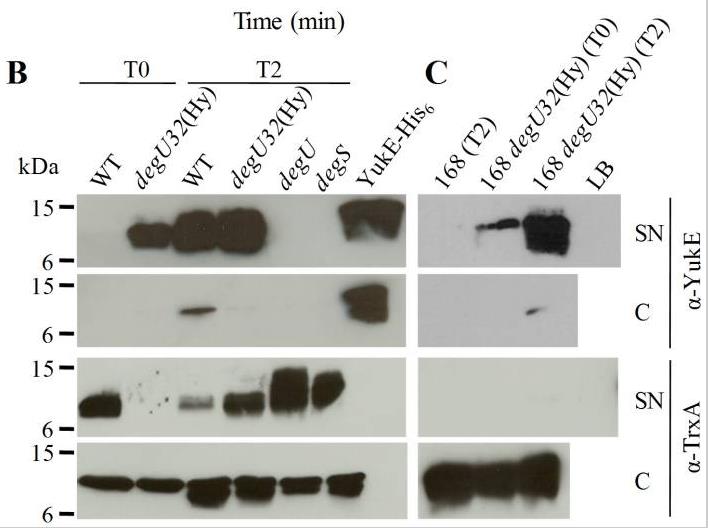
Fig1. Immunodetection of YukE and TrxA (cytosolic control protein) in supernatant precipitates (SN) and cell extracts (C).
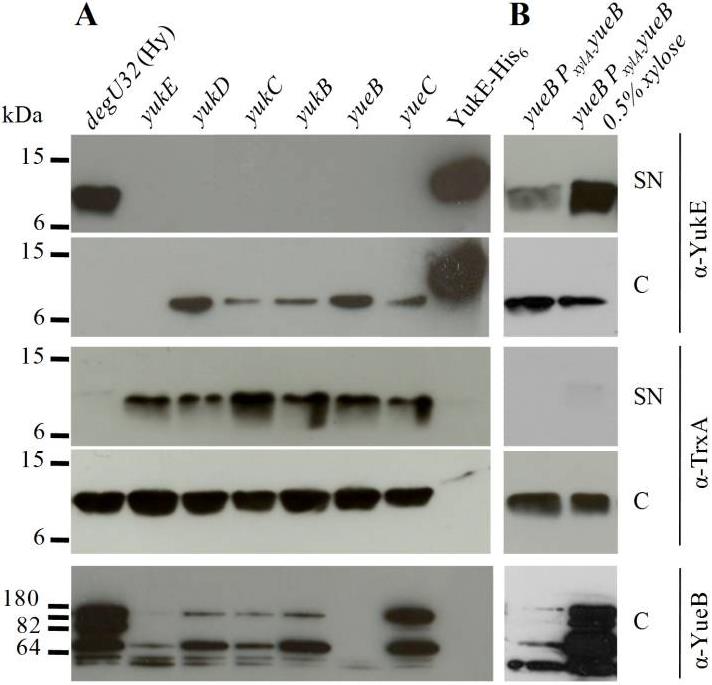
Fig2. YukE production and secretion by BsEss mutant strains.
Case 2: Huppert LA, et al. PLoS One. 2014
Esat-6 protein secretion systems (ESX or Ess) are required for the virulence of several human pathogens, most notably Mycobacterium tuberculosis and Staphylococcus aureus. These secretion systems are defined by a conserved FtsK/SpoIIIE family ATPase and one or more WXG100 family secreted substrates. Gene clusters coding for ESX systems have been identified amongst many organisms including the highly tractable model system, Bacillus subtilis. In this study, researchers demonstrate that the B. subtilis yuk/yue locus codes for a nonessential ESX secretion system. They develop a functional secretion assay to demonstrate that each of the locus gene products is specifically required for secretion of the WXG100 virulence factor homolog, YukE. Then employ an unbiased approach to search for additional secreted substrates. By quantitative profiling of culture supernatants, researchers find that YukE may be the sole substrate that depends on the FtsK/SpoIIIE family ATPase for secretion.
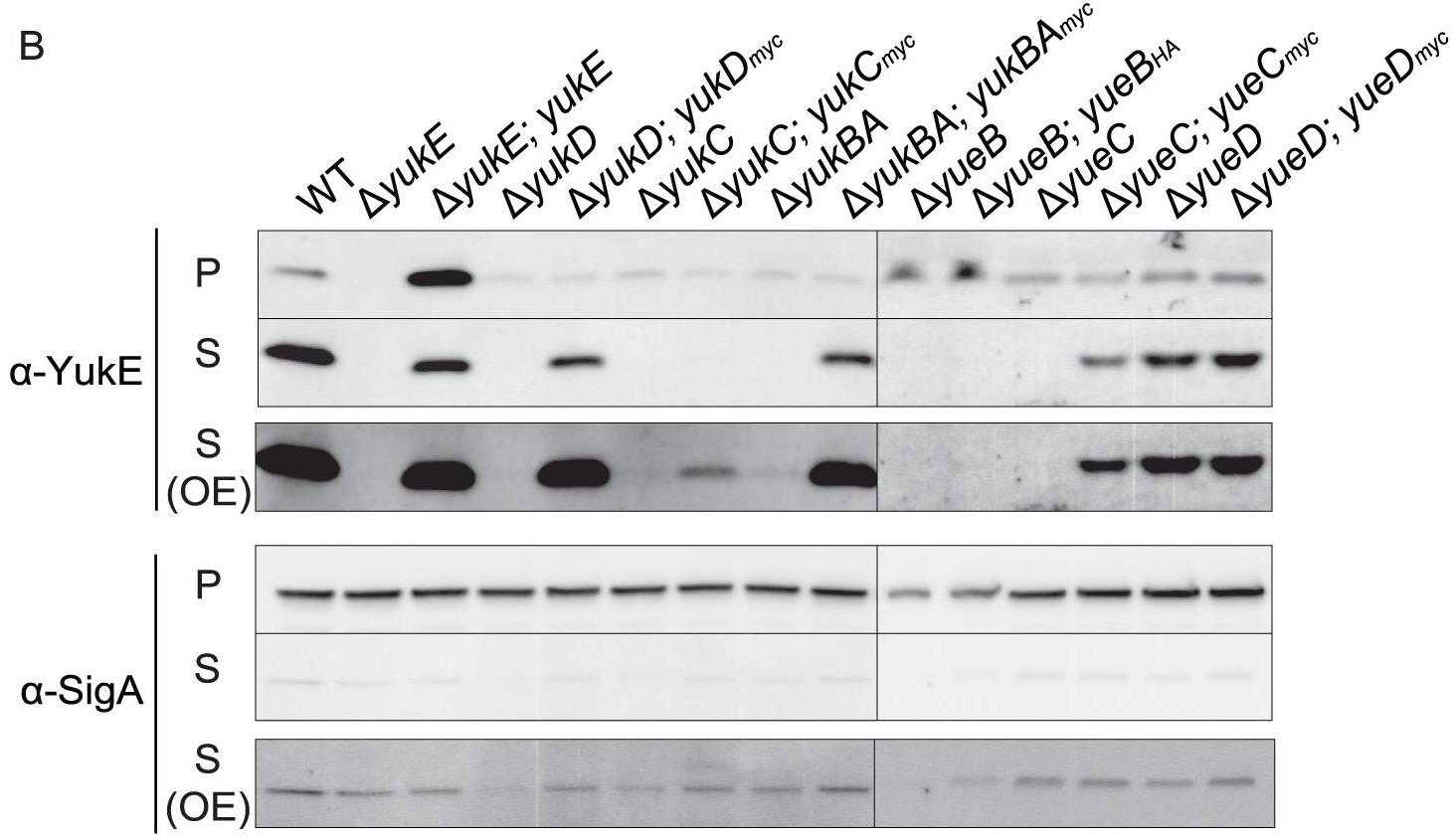
Fig1. Secretion assay for YukE.
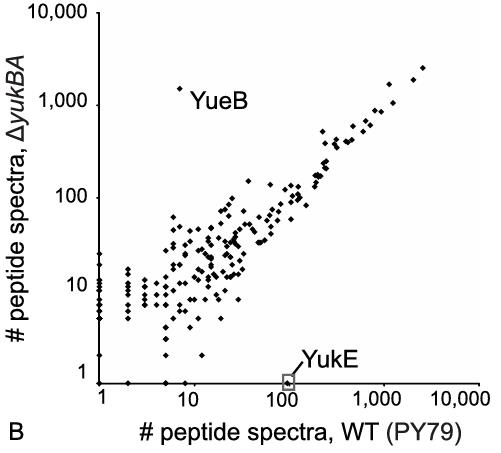
Fig2. The relative abundance of proteins detected in the culture supernatant of the wild-type strain (PY79) versus the ΔyukBA strain.
1. Study on the structure and function of the secretion system: YukE is a small protein typical of the WXG100 superfamily, and its secretion depends on the integrity of the yukDCByueBC gene. The secretion of YukE provides evidence for the study of ESAT-6-like secretory system (Ess) in Bacillus subtilis and reveals the biochemical characteristics of this secretory pathway.
2. Molecular mechanism research: YUKE protein-related research contributes to understanding the molecular mechanism of Type VII secretion system, which is of great significance for revealing how bacteria gain advantages in competition and regulate their physiological activities through the secretion system.
3. Antibacterial effect: YUKE protein mediated protein secretion through the Type VII secretion system may play a role in the antibacterial activity of bacteria. This system is important for pathogenic interactions with eukaryotic hosts in some species.
4. Genetic code expansion: YUKE protein research also involves genetic code expansion technology, which extends the range of chemical functions accessible to biological systems by introducing non-standard amino acids in the process of protein synthesis, and provides new tools for protein design and experiments.
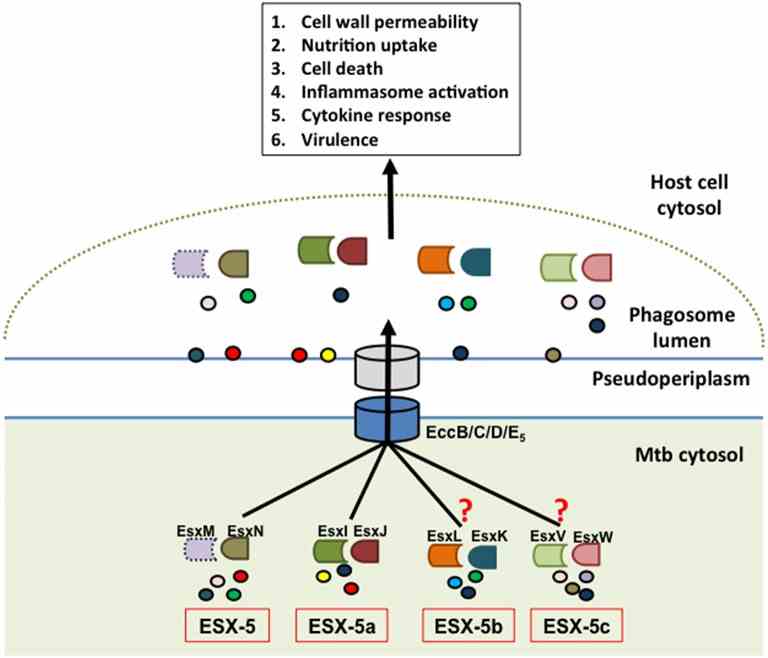
Fig1. Model of ESX-5-dependent secretion mechanism. (Swati Shah, 2016)
Not For Human Consumption!
Inquiry
- Reviews (0)
- Q&As (0)
Ask a Question for All YUKE Products
Required fields are marked with *
My Review for All YUKE Products
Required fields are marked with *



